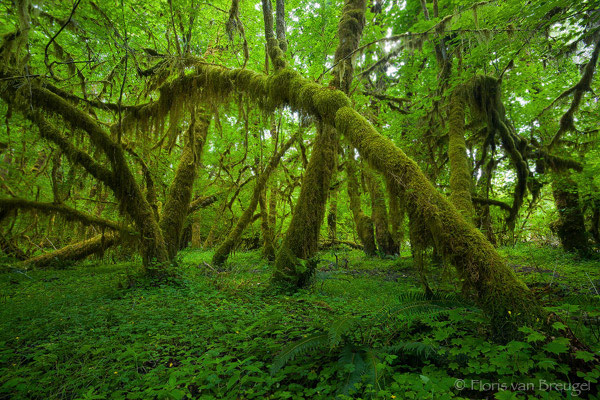Welcome back! This week I present to you an interesting archetype to draft in M15—blue-green control! This one is a little bit off the beaten path, but the deck is fun and powerful while also being unknown in the general metagame that is developing for M15 draft.
The early consensus holds red to be the most powerful color in the limited environment. I agree. Red is very deep at common and offers the most efficient offensive threats. White token decks are also quite strong, but they rely on key cards like Triplicate Spirits and therefore can be difficult to draft and inconsistent to play.
So where does blue-green fit in? The most common blue-green draft archetype in general is the tempo beatdown deck. You know it well from Theros, past core sets, Modern Masters, and many other draft formats. Play fliers and big creatures, then clear the way with tempo spells. Or just make your creatures unblockable. Establish a winning board presence, and then sit back on counterspells.
The cards are there in M15 to try this style—Frost Lynx and Welkin Tern do good work, as does Into the Void—but I don’t think that’s what you want to do with blue-green in M15. Instead, you want to use value creatures in the early game to buy time and gain incremental advantage, then lock up the game with counterspells and bombs.
Here’s an example I drafted in an online prerelease Swiss draft.
Blue-Green Control
| Creatures (15) 2 Elvish Mystic 1 Wall of Mulch 1 Chasm Skulker 2 Frost Lynx 1 Invasive Species 1 Amphin Pathmage 1 Shaman of Spring 1 Paragon of Gathering Mists 2 Nimbus of the Isles 1 Charging Rhino 1 Phytotitan 1 Siege Wurm Spells (8) 2 Divination 1 Restock 1 Into the Void 1 Hunt the Weak 1 Turn to Frog 1 Polymorphist’s Jest 1 Statute of Denial | Lands (17) 9 Island 8 Forest Sideboard (10) 1 Negate 1 Research Assistant 1 Titanic Growth 1 Reclamation Sage 1 Aeronaut Tinkerer 1 Chronostutter 1 Chord of Calling 1 Naturalize 1 Back to Nature 1 Carnivorous Moss-Beast |
This was a really strong deck, with the exception of Turn to Frog, which was horrible and got sided out each round.It can be useful to shut off annoying abilities mid-combat, like a paragon, but generally it just gets trumped by other combat spells and rarely does what you want it to do.
The deck has great sideboard options and tons of play in each game. It feels really resilient, which is important. You want to be able to win games where you start out on the back foot, because that will inevitably happen no matter your deck.
As for cards that didn’t make the cut, Carnivorous Moss-Beast is too slow and interchangeable for my other threats. Also never wanted Chord of Calling, for basically the same reason. I draw a lot of cards and eventually stabilize with some sort of threat, and chord isn’t necessary.
Standout Cards
Chasm Skulker. This card does a great job either applying pressure or staying back to block. Once you get it going with counters, it becomes awkward for your opponent to kill it. Combine it with Paragon of Gathering Mists and the squid tokens can be even more threatening than the skulker. Unless they can snap it off as a 1/1 with a Forge Devil or Crippling Blight, it can take over the game. Curving it into a Divination is really strong, as you can attack with a 4/4 the turn after playing Chasm Skulker. Even though control decks don’t generally want to apply pressure early, sometimes you draw the perfect curve and win the game unexpectedly.
Statute of Denial. Counterspells are quite strong in the format, which is on the slow side and full of bombs and game-changing spells. Dissipate is the gold standard, but it’s uncommon. Statute of Denial, however, is readily available throughout the draft and overperforms. The incidental looting effect is a nice addition, as you will often have a blue creature on board to satisfy that condition. Do be aware though that the loot is not optional—if Statute of Denial is the last card in your hand and you cast it with a blue creature on board, you will have to draw a card and then discard it. For that reason, it is a good idea to keep an extra land or dead card in hand when holding up counterspells.
Shaman of Spring. The green Divination. One of the two cards just happens to be a 2/2 body, which is relevant for establishing board presence. Often in a control deck the early Divination can be dangerous as you tap out yet fail to develop the board. Shaman gets around that, while also providing a useful enters-the-battlefield ability that can be reused through Invasive Species or Peel from Reality. Roaring Primadox is a little too all-in for this sort of deck, but grinding out repeated value from your early creatures is really important for a control deck in this format.
Invasive Species. This card does so much. As discussed above, it lets you reset creatures for any number of reasons—retriggering ETB effects, knocking off an Encrust or Stab Wound, resetting a Phyrexian Revoker or Undergrowth Scavenger that you played out early for defense, returning Aggressive Mining to your hand, etc etc.
Restock. Now here is a late game card advantage spell that makes the whole deck sing. Nobody drafts this card, so you can pick one up late. My favorite play with it was to rebuy a Hunt the Weak and a Statute of Denial. Once you’ve stabilized, a play like that practically seals up the game. Removal is hard to come by in blue-green, so it is invaluable to be able to get a second use out of one spell.
Polymorphist’s Jest. This is a weird combat trick, but it is useful to help block and kill evasive creatures. It’s not as insane as Aetherspouts, but both of those rares really help shut down big attacks from your opponent and fit nicely into the control shell.
Charging Rhino. Here’s a good common finisher. They can only block with one creature, so generally it goes through for four damage. If you hold up Negate to protect the rhino from combat tricks, it is a very resilient threat that can close out games.
Summary
Overall, I like how blue-green plays as a control deck. It seems a little better than blue-black, because green has better threats and more card advantage through its permanents. Green is a bit weaker than in many sets because it doesn’t have the super-efficient beaters—say a Rumbling Baloth—and instead relies on convoke to power out a Siege Wurm. But green has a lot of useful card-advantage creatures that shine in a control deck. Pair that with blue’s card draw and counterspells, and you have a solid control deck.
I don’t think blue-green control is the best deck in the format, and it is not an easy deck to play, but I recommend it as a challenge for those of you who want to try something different and avoid fighting the rest of the draft table for red and white cards.
Carrie O’Hara is Editor-in-Chief of Hipsters of the Coast.




